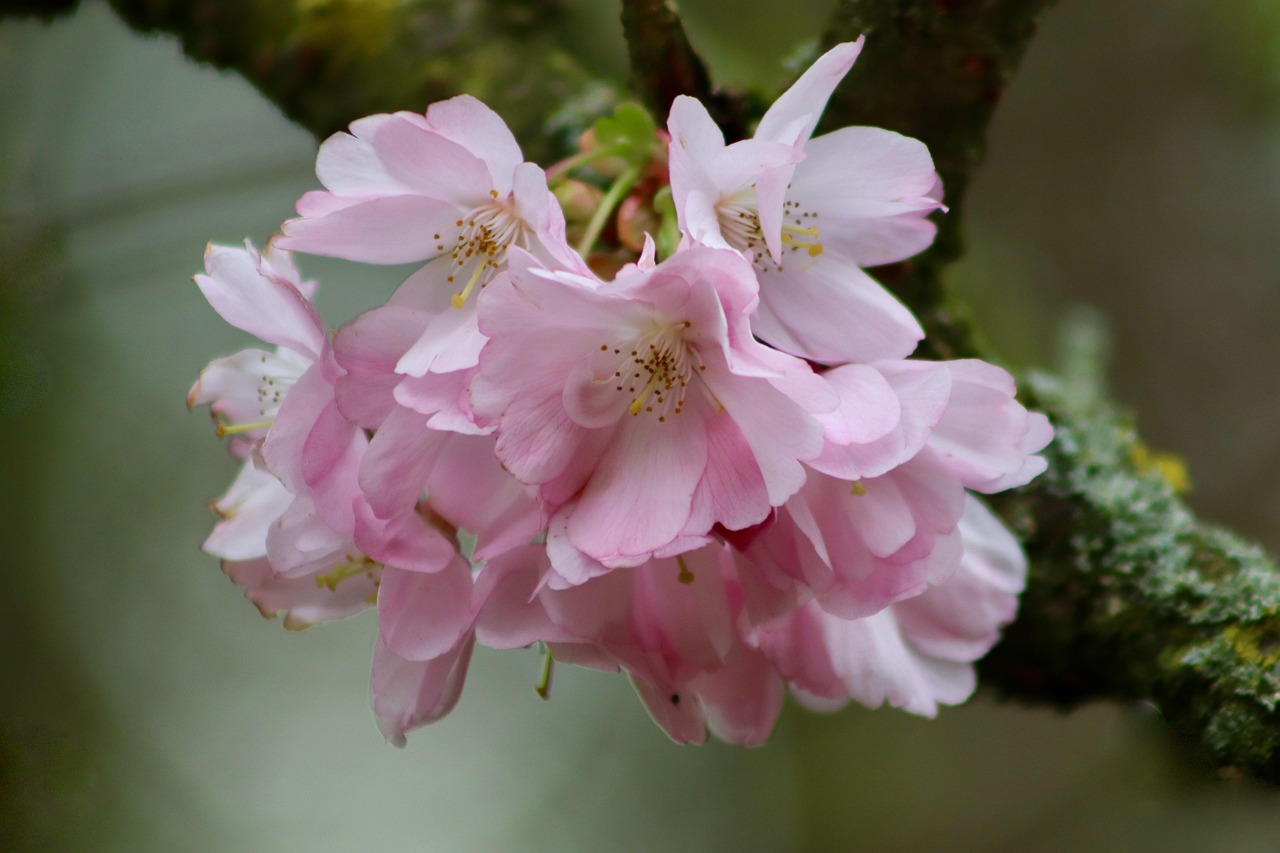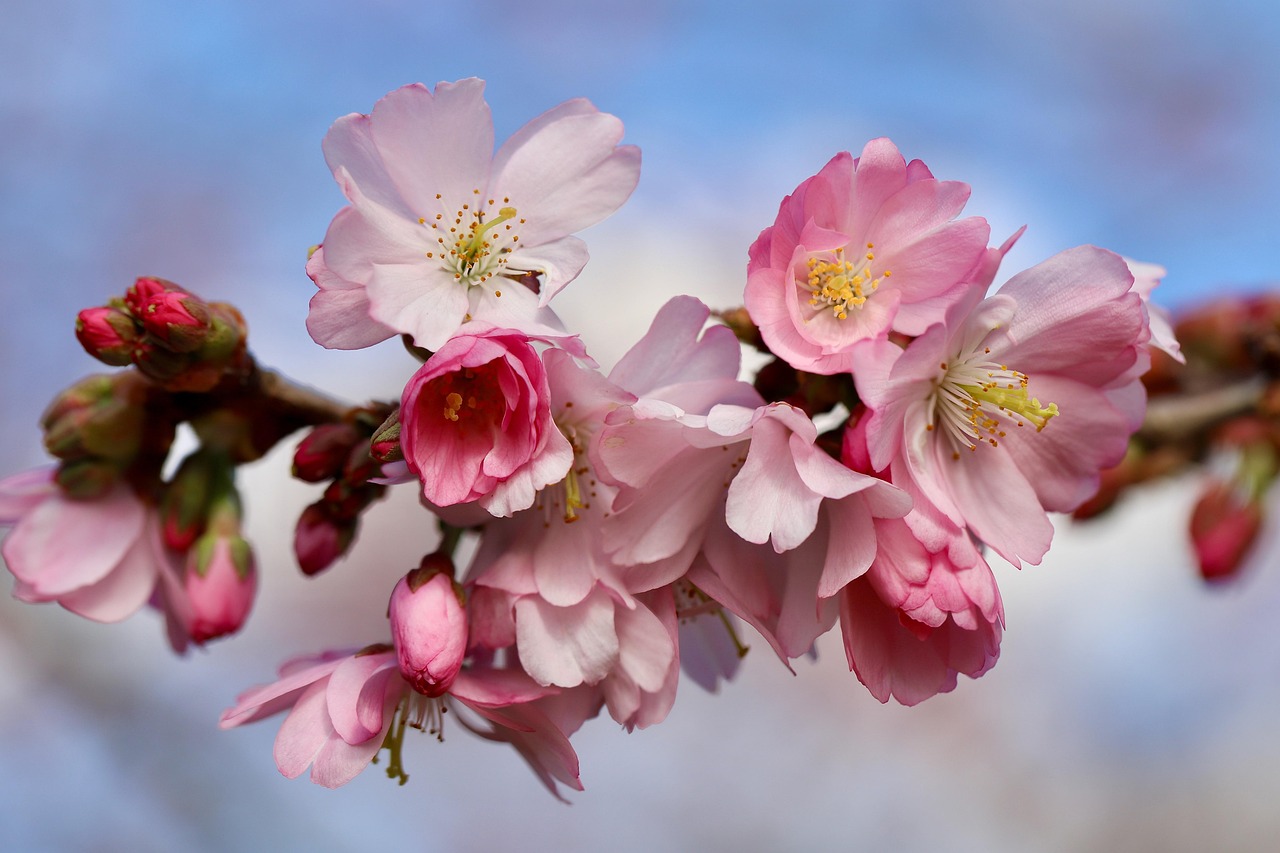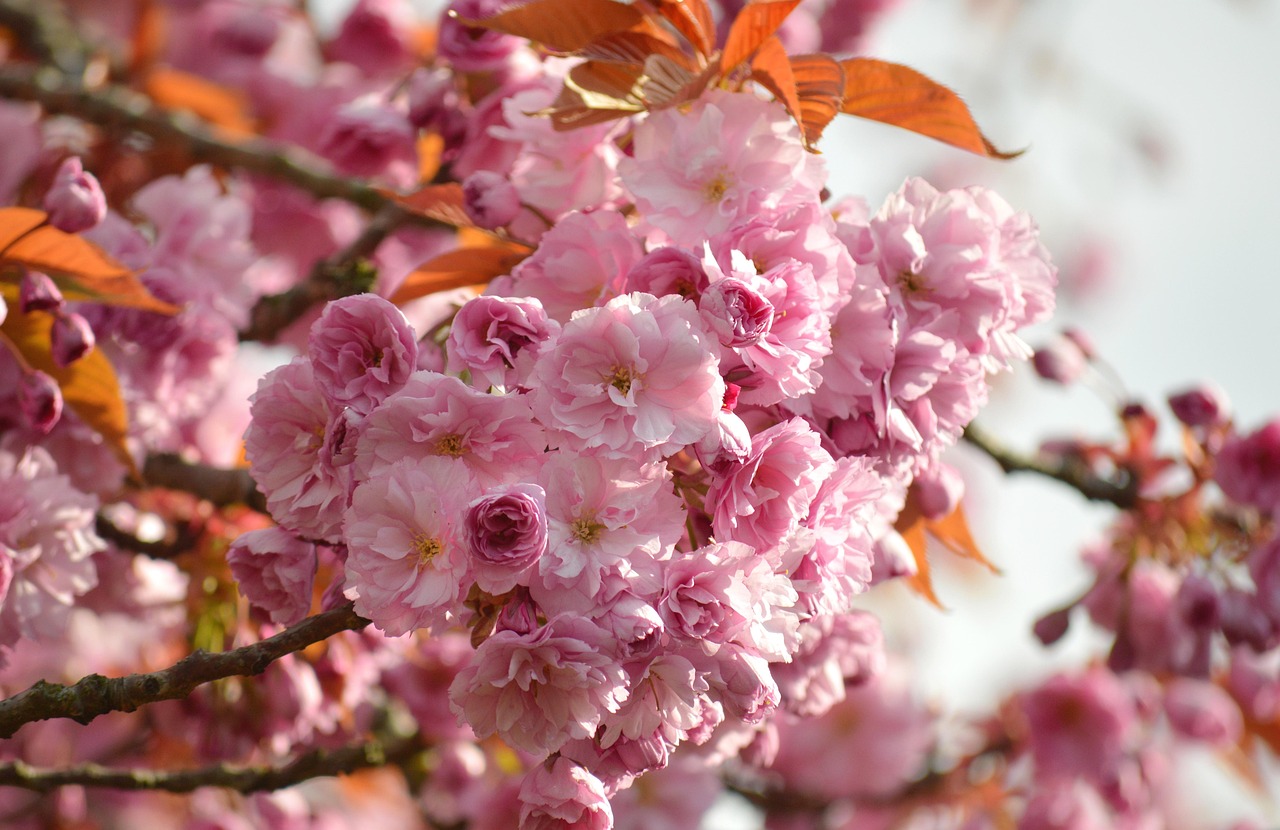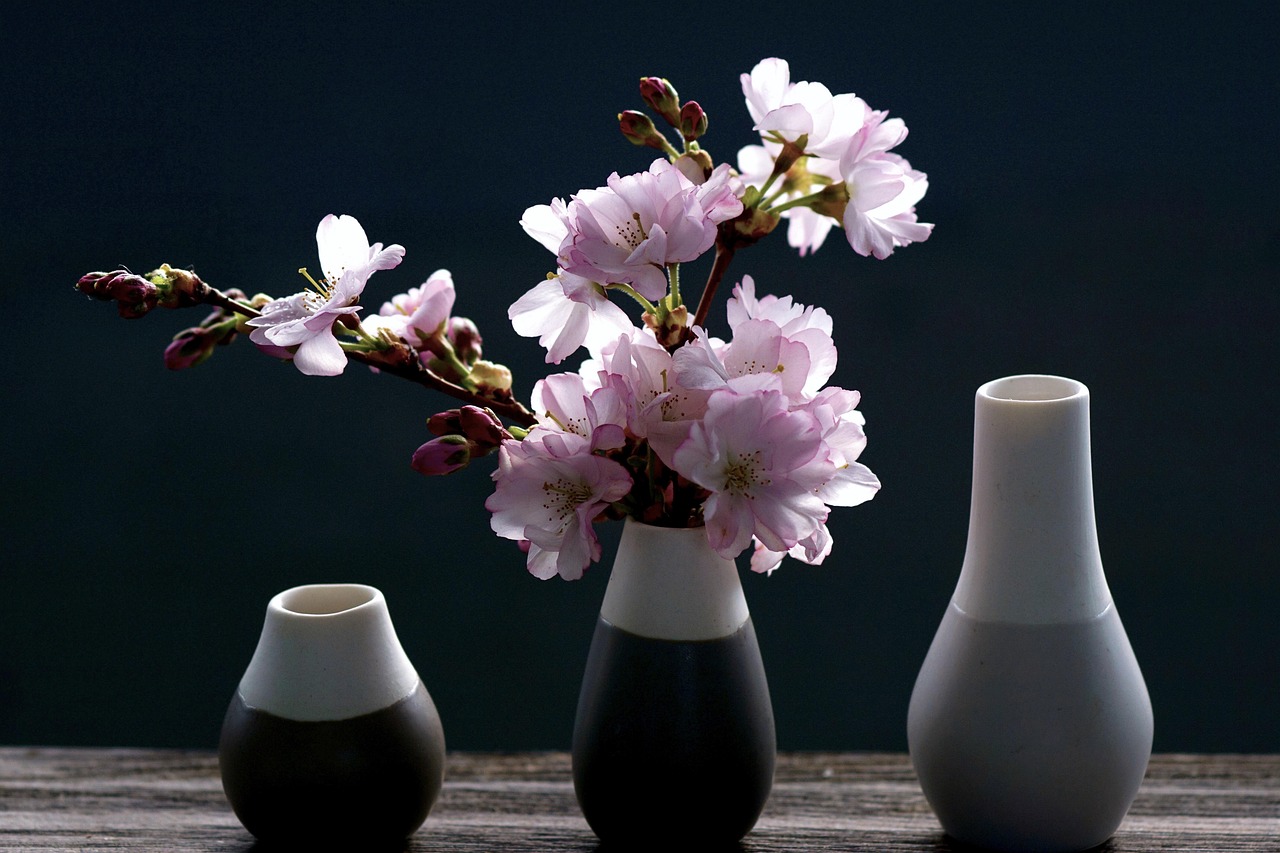Cherry blossom tree pruning enhances street beautification by promoting healthy growth, improving aesthetics, and ensuring public safety. Properly pruned trees produce vibrant blooms, create canopy effects, and reduce hazards from falling branches.
Cherry blossom trees, also known as sakura, are celebrated for their stunning beauty and cultural significance. These trees bloom in spring, attracting tourists and nature enthusiasts alike. Their delicate pink and white flowers create picturesque landscapes, especially in urban settings. However, to maintain their beauty and health, regular pruning is essential.

Pruning cherry blossom trees serves several important purposes. It helps to shape the tree, remove dead or diseased branches, and encourages the growth of vibrant flowers. Pruning also allows for better air circulation and sunlight penetration, which is crucial for the tree’s overall health. Additionally, well-maintained trees contribute to a safer environment by reducing the risk of falling branches.
Benefits of Pruning Cherry Blossom Trees
Understanding the benefits of pruning cherry blossom trees is vital for anyone involved in street beautification efforts. Here are some key advantages:
- Enhanced Aesthetics: Pruning shapes the tree, making it more visually appealing.
- Improved Health: Removing dead or diseased limbs promotes healthier growth.
- Increased Safety: Regular pruning reduces hazards from falling branches.
- Better Bloom Production: Proper pruning techniques encourage more flowers to bloom.
- Air Circulation: Thinning the branches allows better air flow, preventing fungal diseases.
The timing of pruning cherry blossom trees is crucial. The best time to prune is during the late winter or early spring before the buds open. This timing minimizes stress on the tree and maximizes blooming potential. Pruning at this time allows gardeners to see the structure clearly without foliage blocking their view.

When pruning cherry blossom trees, it is important to use the right techniques. Here are some essential tips to consider:
Pruning Techniques
- Thinning: Remove selected branches to improve light penetration and air flow.
- Heading Back: Shorten branches to encourage bushier growth.
- Crown Reduction: Reduce the height of the tree while maintaining its natural shape.
- Deadwooding: Remove dead or dying branches to promote health.
Using sharp, clean tools is essential for effective pruning. It helps prevent injury to the tree and reduces the risk of disease transmission. After pruning, it is good practice to apply a sealant to any large cuts to protect them from pests and infections.
Common Challenges in Pruning Cherry Blossom Trees
While pruning cherry blossom trees can significantly enhance street beautification, it is not without challenges. Some common issues include:

| Challenge | Description |
|---|---|
| Pest Infestation | Pests can damage trees if not controlled before or after pruning. |
| Disease Spread | Improper cuts can lead to disease transmission among trees. |
| Incorrect Timing | Pruning at the wrong time can negatively affect blooming. |
| Lack of Knowledge | Improper techniques can harm the tree instead of helping it. |
To mitigate these challenges, it is advisable to consult with an arborist or a tree care professional who understands cherry blossom trees. They can provide guidance on best practices and help ensure that pruning efforts are successful.
In addition to proper pruning techniques, ongoing maintenance plays a significant role in keeping cherry blossom trees healthy and beautiful. This includes regular inspections for pests and diseases, appropriate watering practices, and ensuring that trees have adequate nutrients.
Cultivating a community ethos around caring for cherry blossom trees can also enhance their beauty. Community events focused on tree care and education can foster a sense of ownership and responsibility among residents. Engaging local volunteers in pruning activities not only beautifies the streets but also strengthens community bonds.

Ultimately, investing time and resources into properly pruning cherry blossom trees will yield long-term benefits for urban landscapes. Vibrant blooms and healthy trees can transform streets into stunning corridors that attract visitors and enhance the quality of life for residents.
Seasonal Considerations for Pruning Cherry Blossom Trees
Pruning cherry blossom trees is not a one-size-fits-all process. The seasons play a crucial role in determining when and how to prune these beautiful trees. Understanding the seasonal growth patterns of cherry blossoms can help ensure optimal results.
Spring Pruning
Pruning in spring should be approached with caution. As the trees begin to bloom, any significant pruning can stress them. However, light pruning to remove dead or diseased branches can be beneficial. This is the time when the tree is preparing to produce its stunning flowers.
Summer Pruning
Summer is generally not recommended for heavy pruning. However, it can be an ideal time for monitoring tree health. Light pruning, particularly deadwooding or removing suckers, can be performed to maintain aesthetics and health without compromising blooming.
Fall Pruning
Fall is a transitional period for cherry blossom trees. As they prepare for dormancy, it is essential to avoid heavy pruning during this time. Instead, focus on removing any dead or diseased wood to prepare the tree for winter. This practice helps to prevent disease and pest issues before the colder months.
Winter Pruning
Winter is often considered the best time for major pruning activities. During this dormant period, the tree’s structure is easily visible without foliage. It allows for precise cuts that promote healthy growth in the spring. Key points to remember for winter pruning include:
- Visibility: The absence of leaves makes it easier to see the tree’s structure.
- Reduced Stress: Pruning during dormancy minimizes stress on the tree.
- Encouragement of New Growth: Proper cuts can stimulate new growth as spring arrives.
Tools and Equipment for Pruning
Having the right tools is essential for effective cherry blossom tree pruning. Proper equipment not only makes the task easier but also ensures that cuts are clean and safe for the tree.
Essential Pruning Tools
- Hand Pruners: Ideal for small branches and precise cuts.
- Loppers: Useful for thicker branches that require more leverage.
- Saws: Essential for cutting larger limbs safely.
- Gloves: Protect your hands from cuts and scrapes.
- Safety Goggles: Protect your eyes from falling debris.
Before starting any pruning activity, make sure to clean and disinfect your tools. This practice helps prevent the spread of disease between trees. Additionally, ensuring that your tools are sharp will provide cleaner cuts, which reduce stress on the tree.
Understanding Tree Anatomy for Effective Pruning
A good understanding of tree anatomy is crucial for effective pruning. Knowing how cherry blossom trees grow and respond to cuts can guide your actions to achieve the best results.
Key Parts of a Cherry Blossom Tree
- Crown: The upper part of the tree where foliage grows. Proper crown management encourages sunlight penetration.
- Branches: The limbs that extend from the trunk. Healthy branch structure is vital for overall stability.
- Trunk: The main support structure. It must remain clear of competing branches to ensure strength.
- Roots: Below ground, roots anchor the tree and absorb water and nutrients. Healthy roots support overall growth.
Growth Patterns
Cherry blossom trees exhibit specific growth patterns. Understanding these can help determine where to prune:
- Vertical Growth: Cherry blossoms typically grow upright. Pruning should focus on maintaining a balanced height.
- Lateral Growth: Branches grow outward, creating a canopy. Thinning branches can help promote air circulation.
- Budding: New buds form on last year’s growth. Prune just above these buds to encourage healthy flowering.
The Role of Fertilization After Pruning
After pruning, fertilization plays a crucial role in promoting healthy regrowth. Providing the right nutrients can enhance flowering and overall tree health.
Best Practices for Fertilizing Cherry Blossom Trees
- Selecting Fertilizer: Use a balanced fertilizer with equal parts nitrogen, phosphorus, and potassium.
- Timing: Fertilize in early spring when new growth begins.
- Application Method: Spread granular fertilizer evenly around the base of the tree and water thoroughly.
A well-fertilized cherry blossom tree will not only recover from pruning more effectively but also produce more vibrant blooms in the following seasons.
The combination of proper seasonal pruning, effective tools, an understanding of tree anatomy, and post-pruning care through fertilization will set the foundation for stunning cherry blossoms that beautify streets and public spaces.
Pest and Disease Management for Cherry Blossom Trees
Maintaining the health of cherry blossom trees goes beyond pruning and fertilization. It is essential to monitor for pests and diseases that can threaten their vitality. Understanding common issues and implementing preventative measures is key to preserving these beautiful trees in urban landscapes.
Common Pests Affecting Cherry Blossom Trees
Pests can significantly impact the health of cherry blossom trees. Here are some of the most common pests that gardeners should be aware of:
- Cherry Bark Fly: This pest feeds on tree sap, causing damage to the bark.
- Aphids: These small insects suck sap from leaves, leading to curling and yellowing.
- Spider Mites: Tiny pests that cause stippling on leaves. They thrive in dry conditions.
- Japanese Beetles: These beetles feed on leaves and flowers, leading to significant damage.
To manage these pests, regular monitoring is essential. Look for signs of infestation, such as discolored leaves or visible insects. Early detection can help prevent more severe damage.
Effective Pest Control Methods
There are several methods for controlling pests on cherry blossom trees:
- Natural Predators: Encourage beneficial insects like ladybugs and lacewings, which feed on harmful pests.
- Insecticidal Soap: This eco-friendly option effectively targets soft-bodied insects without harming the tree.
- Neem Oil: A natural pesticide that disrupts the life cycle of many pests.
- Physical Barriers: Use row covers to protect young trees from pests during vulnerable periods.
Disease Management for Cherry Blossom Trees
In addition to pests, cherry blossom trees are susceptible to various diseases. Identifying and managing these conditions can help ensure healthy growth and vibrant blooms.
Common Diseases
- Crown Gall: Caused by bacteria, this disease leads to galls or growths on the trunk and roots.
- Powdery Mildew: A fungal disease that produces a white, powdery substance on leaves, affecting photosynthesis.
- Leaf Spot: Fungal infections can cause dark spots on leaves, leading to premature leaf drop.
- Root Rot: Overwatering or poor drainage can lead to root rot, causing wilting and tree decline.
Preventative Measures for Tree Health
Preventing diseases in cherry blossom trees is more effective than trying to treat them after they occur. Here are some key strategies:
- Proper Pruning: Ensure adequate air circulation through proper pruning techniques to reduce humidity around foliage.
- Avoid Overwatering: Ensure trees are not sitting in waterlogged soil, as this can lead to root rot.
- Fungicides: Apply fungicides as a preventive measure during high-risk periods for diseases like powdery mildew.
- Cultural Practices: Implement good sanitation practices by cleaning up fallen leaves and debris that harbor pathogens.
The Importance of Soil Quality
The quality of soil plays a significant role in the health of cherry blossom trees. Healthy soil contributes to strong root systems and overall tree vitality.
Soil Composition
The ideal soil for cherry blossom trees should have a balanced composition. Consider the following factors:
- Poor Drainage: Cherry blossom trees prefer well-draining soil. Avoid areas where water tends to pool.
- Nutrient-Rich: Soil should be rich in organic matter, providing essential nutrients for growth.
- pH Levels: The ideal pH level for cherry blossoms is between 6.0 and 7.0. Testing soil pH can help determine if amendments are needed.
Improving Soil Quality
If the soil quality is lacking, various amendments can improve its health:
- Compost: Adding organic compost enriches the soil with nutrients and improves structure.
- Pearlite or Sand: Mixing in perlite or sand helps improve drainage in heavy soils.
- Lime or Sulfur: Use lime to raise pH levels or sulfur to lower them based on soil test results.
| Soil Amendment | Benefits |
|---|---|
| Compost | Adds nutrients and improves soil structure. |
| Pearlite | Aids drainage and aeration in heavy soils. |
| Lime | Raises soil pH for better nutrient availability. |
| Sulfur | Lowers soil pH for acid-loving plants. |
Caring for cherry blossom trees involves understanding their needs at every level, from pest management to soil quality. By incorporating these practices into your care routine, you can ensure that these stunning trees thrive in urban environments, bringing beauty and joy to all who see them.
Beyond pruning, pest management, and soil quality, the overall health and appearance of cherry blossom trees can be influenced by various environmental factors. Understanding these factors can help ensure that cherry blossoms flourish in urban settings while enhancing street beautification efforts.
Environmental Factors Affecting Cherry Blossom Trees
Cherry blossom trees thrive in specific environmental conditions. Here are some factors that can significantly impact their growth and health:
- Sunlight: Cherry blossoms require full sun for optimal growth. A minimum of six hours of direct sunlight daily is essential for robust flowering.
- Watering: These trees prefer a well-drained environment. Inadequate watering can result in stress and hinder blooming, while overwatering can lead to root rot.
- Temperature: Cherry blossoms flourish in temperate climates. They require a cold winter dormancy period to bloom beautifully in spring.
- Wind Exposure: High winds can damage blossoms and branches. Planting in sheltered areas can protect these delicate trees.
Choosing the right location for planting cherry blossom trees is crucial for their long-term health. Urban planners and community members should assess these environmental factors to create optimal growing conditions on streets and public spaces.
Community Engagement in Tree Care
Community involvement plays a vital role in the ongoing care and maintenance of cherry blossom trees. Engaging local residents fosters a sense of ownership and responsibility, which can lead to better tree health and aesthetics.
Ways to Foster Community Engagement
- Tree Adoption Programs: Encourage residents to adopt a cherry blossom tree, caring for it throughout the year.
- Educational Workshops: Host workshops on tree care, pruning techniques, and pest management to equip community members with knowledge.
- Volunteer Days: Organize community events for tree planting, pruning, and maintenance, allowing residents to contribute actively.
- Art Projects: Collaborate with local artists to create sculptures or murals celebrating cherry blossoms, enhancing the aesthetic value further.
Community engagement not only improves the health of cherry blossom trees but also builds stronger connections among residents. When people come together to care for their environment, they create more vibrant neighborhoods.
Cherry Blossoms and Urban Biodiversity
Cherry blossom trees contribute significantly to urban biodiversity. By providing habitats for various species, they play an integral role in supporting local ecosystems.
Benefits of Cherry Blossoms for Urban Wildlife
- Food Source: The flowers attract pollinators such as bees and butterflies, which are essential for the ecosystem’s health.
- Nesting Habitats: The branches provide shelter for birds and small mammals, promoting wildlife diversity.
- Ecosystem Stability: Healthy cherry blossom trees contribute to the overall health of urban ecosystems, improving air quality and reducing heat islands.
By incorporating cherry blossom trees into urban planning, cities can enhance not only their aesthetic appeal but also their ecological integrity. This dual benefit highlights the importance of integrating nature into urban environments.
Final Thoughts
The beauty of cherry blossom trees extends beyond their visually stunning blooms. Pruning, pest management, soil quality, and community engagement all play critical roles in ensuring these trees thrive in urban settings. By taking a holistic approach to tree care, communities can create vibrant public spaces that enhance the quality of life for residents and visitors alike.
Caring for cherry blossom trees is an investment in both local beauty and ecological health. The stunning blooms that greet us each spring are not just a testament to nature’s artistry but also a reflection of our commitment to nurturing it. With concerted efforts in care and community involvement, cherry blossoms will continue to grace our streets for generations to come.
In conclusion, embracing the principles of proper pruning, pest management, soil quality improvement, and community engagement establishes a foundation for thriving cherry blossom trees. These efforts will not only beautify our surroundings but will also enrich our lives through nature, culture, and community spirit.
